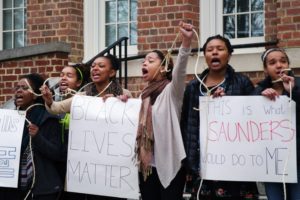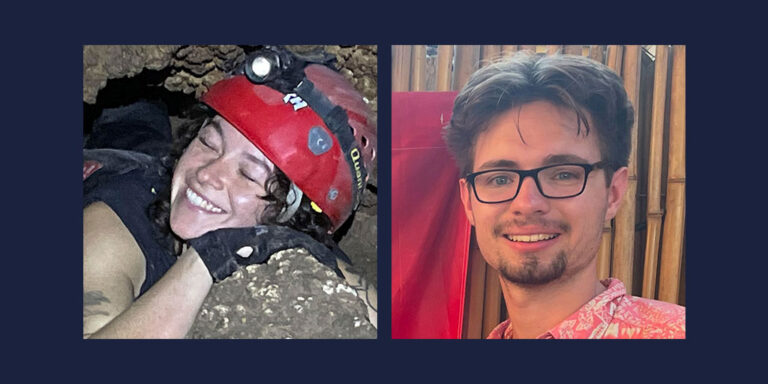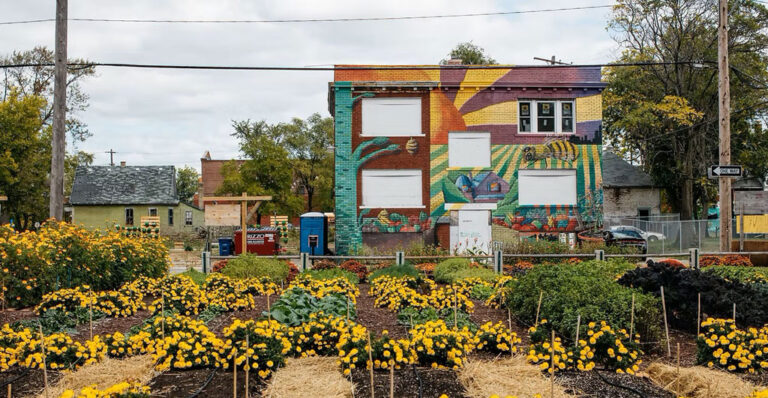Op-Ed: #KickOutTheKKK: Challenging White Supremacy at UNC

On May 28, 2015, the Board of Trustees at the University of North Carolina (UNC) at Chapel Hill voted to rename Saunders Hall—the building in which the Geography Department is located—following months of student protest that garnered national attention. Nearly a century ago, this building was named in honor of William L. Saunders (1835—1891), a white supremacist who played a leading role in the Ku Klux Klan of North Carolina during the nineteenth century. When the name was bestowed in 1920, the university’s Board of Trustees listed Saunders’ leadership in the KKK as one of his accomplishments deserving recognition. Naming a building for Saunders was therefore a clear attempt to inscribe the legacy of white supremacy into the very fabric of the university’s cultural landscape. And the fact that the building’s name endured for over 90 years speaks to how legacies of anti-black racism are a largely unquestioned and taken-for-granted aspect of our everyday surroundings, both on and off university campuses. We say “largely” because the power of every racialized landscape never goes completely unchallenged, and Saunders Hall was no exception.
Over the years, students led various efforts to have this building renamed, particularly during the anti-apartheid struggles of the 1980s and early 1990s. For example, 25 years ago, students published an op-ed about Saunders’ legacy in the independent student newspaper at UNC, declaring: “Building should not be named for former KKK grand dragon” (Robinson and Hafer in Daily Tar Heel, 1990). These calls to rename Saunders Hall encountered institutional resistance and were largely ignored by university administrators (Chapman, 2006; Babatunde, 2015).
When resistance to renaming places is articulated, it usually takes the form of an argument that the act of renaming will “erase history”—an argument that surfaced, in recent debates over renaming Saunders Hall, among some progressive as well as conservative voices. Yet a distinction must certainly be drawn between acknowledging the past and bestowing honor upon a historical figure through commemoration. The naming of university buildings after individuals is, without question, a case of the latter. As UNC’s Policy on Naming University Facilities and Units states, “[t]he act of naming a University facility or unit for a person … is the conferral by the University of a high and conspicuous honor.” Maintaining a building named in Saunders’ honor, particularly in the face of anti-racist calls to remove it, thus signified the university’s ongoing commitment to honoring the legacy of white supremacy on campus.
Even in 2015, the campaign to rename Saunders Hall was hard fought and proponents, who included geography faculty and students among others, faced considerable opposition. The student activist group, The Real Silent Sam Coalition, held protests on campus and via social media that galvanized national media coverage, drawing on a creative array of tactics—from performance art, the spoken word, poetry, a capella singing, artwork, t-shirts, banners, a manifesto, and the #KickOutTheKKK hashtag to the dramatic reenactment of racist speech from a 1913 Confederate memorialization on campus. The coalition also reproduced a document from the university archives, and regularly posted it around the building all spring, illustrating that the building had not been named despite William Saunders’ role in the KKK, but in fact because of it. Saunders’ position as “Head of the Ku Klux Klan of North Carolina” was indeed acknowledged in Board of Trustees’ proceedings in 1920 as one of his positive contributions, listed only after his status as a Confederate officer, and above his positions as Secretary of State, Treasurer, and Compiler and Editor of the Colonial Records of North Carolina. While the latter position has been the one most frequently identified by the university in recent years as the main reason for naming Saunders Hall, which then housed the History Department, it is evident that much more was at play in naming the building after Saunders as “one of the master minds of North Carolina,” amounting to a kind of victory lap for supporters of the KKK in the state and the university. Shedding light on this history of white supremacy in the campus landscape, the protests garnered support for change among UNC students, staff, and faculty, along with opposition, compelling the Board of Trustees to respond.
In May 2015, the Board of Trustees eventually approved the removal of Saunders’ name from the Hall in a 10-3 vote, but they also passed a 16-year moratorium on any further campus name changes and chose the generic and booster-laden name of “Carolina Hall” to replace that of Saunders, reflecting deep anxieties over the conservation of the university’s signature landscape at a moment of rapid cultural change. The renaming of Saunders Hall is an important achievement but in some ways remains a low bar to set for the naming of university buildings; that is, for students to take classes in a building that is not named for a KKK leader from a brutal period of racial terror in central North Carolina.
Student activists had demanded—and continue to demand—that the building carry the name “Hurston Hall,” to memorialize African American writer Zora Neale Hurston and challenge UNC’s gendered politics, as well as its racialized politics, of public memory (The Real Silent Sam Coalition, 2015). During the 1930s, Hurston was the first black student to attend UNC when she studied with Pulitzer Prize-winning playwright Paul Green. Since African Americans were not allowed to enroll during the Jim Crow era, there is no official record of Hurston’s attendance. UNC’s Board of Trustees used this fact to avoid consideration of Hurston’s name despite strong and vocal student support. Seventy-five years ago, when courts forced the university to desegregate (at least on a token basis), it was African American men who were first enrolled, revealing the complex entanglements of racism and sexism in the campus’ lived history. Even today there are only 16 buildings named for women at UNC, with the vast majority of cases being those of women who were part of a joint naming with their husbands. Only 8 UNC buildings are named for African Americans, and women of color are remembered in the monikers of a mere 4 campus buildings (or 2.5% of the total).
Importantly, the Real Silent Sam Coalition’s struggle in Chapel Hill is part of a growing movement to reconsider why college buildings are named after white supremacists (Svokos, 2015). Such debates are particularly active at schools in the South, such as Clemson, Duke, East Carolina, Radford, and Winthrop, yet similar efforts have arisen across the border in Canada as well. In British Columbia, for instance, students at the University of Victoria unsuccessfully lobbied to rename Joseph Trutch Residence Hall in 2010, which honors a politician known for dramatically reducing First Nations reserve lands in the province. One key challenge for activists is that momentum behind student-led movements is hard to sustain from one cohort of students to the next, a fact university administrators use to their advantage by simply waiting for collective amnesia to sink in again once a vocal group of students graduates. In such cases, faculty can help sustain the memory of past struggles by sharing the history and tactics of social movements with each incoming cohort of university students.
As the situation in Chapel Hill illustrates, geographers are especially well-equipped to play a leading role in social justice struggles over the production of commemorative landscapes on college campuses and beyond. In particular, the discipline of geography has much to offer to understanding and intervening within debates over the politics of place by challenging institutional authorities and university communities to reassess the meanings, values, and identities inscribed into campus geographies through place naming and other forms of commemoration. Even after name changes are made, the need among students for understanding both the contemporary and historical contexts of symbolic practices of naming are no less acute; perhaps more so, as the case of the newly dubbed Carolina Hall suggests.
While some of the most provocative ideas about anti-racism and social change originate at universities, academic geographers could surely do much more to challenge the complicity of their own campus landscapes in perpetuating racism and sexism. With this mind, we call on our fellow geographers at other universities to begin conducting close and critical readings of their own university campuses, engaging the student body and broader public in challenging the legacy of white supremacy that has been etched into the names of buildings, streets, stadia, and parks that collectively form the commemorative landscapes of higher education in America.
Reuben Rose-Redwood, University of Victoria
Derek Alderman, University of Tennessee at Knoxville
Altha Cravey, University of North Carolina at Chapel Hill
Scott Kirsch, University of North Carolina at Chapel Hill
Omololu Refilwe Babatunde, University of North Carolina at Chapel Hill
Josh Inwood, University of Tennessee at Knoxville
References
Babatunde, Omololu Refilwe (2015), Black Liberatory Senses of Place: Creating from Abject Otherness, undergraduate honors thesis, Department of Geography, University of North Carolina, Chapel Hill, NC.
Chapman, John (2006), Black Freedom and the University of North Carolina, 1793-1960, doctoral dissertation, Department of History, University of North Carolina, Chapel Hill, NC, <https://cdr.lib.unc.edu/indexablecontent/uuid:9797fe2f-6cb9-4e40-8674-619fa3a597b4>, last accessed on June 16, 2015.
Robinson, Keith and Claire Hafer (1990), “Building Should Not Be Named for Former KKK Grand Dragon,” The Daily Tar Heel, November 12, p. 11.
Svokos, Alexandra (2015), “Why Are College Buildings Still Named After White Supremacists?” Huffington Post, June 11, <https://www.huffingtonpost.com/2015/06/11/college-buildings-white-supremacists_n_7554958.html>, last accessed on June 16, 2015.
The Real Silent Sam Coalition (2015), “The Real Silent Sam Coalition: Manifesto 2015,” The Siren: Online Magazine, April 6, <https://uncsiren.com/real-silent-sam-coalition-manifesto-spring-2015>, last accessed on June 16, 2015.


